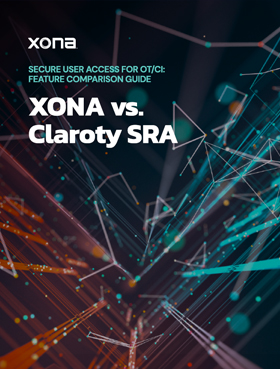This guide compares the two companies’ solutions according to key criteria required by OT organizations and the employees, contractors, and vendors they need to support. This includes minimizing operational cost and complexity, providing frictionless access, and the ability to isolate the OT protocols used to access OT assets.
The comparison highlights the difference between a self-contained and hardened SRA solution (XONA) and one that is complex, requiring the installation of software, hardware/VMs, secure tunnels, and changes to network configurations (Claroty).
In this paper, you will learn about secure user access for OT/CI in the context of:
- Deployment that is fast and easy.
- Limiting changes to existing environments.
- Enabling a zero-trust model for user authentication and access control.
- Controlling ongoing operational costs.
- Delivering a high degree of cyber security while minimizing cyber risk.
- Supporting secondary capabilities such as user monitoring and regulatory compliance.
Choosing the Right Secure User Access Solution for OT/CI
When evaluating secure user access for OT/CI one should look for solutions that can reduce the cost and complexity of administering safe, secure, and reliable access, while reducing mean-time-to-resolution (MTTR) and improving uptime and reliability. A XONA comparison to Claroty highlights the difference between a self-contained and purpose-built solution for OT/CI, and one that introduces unnecessary complexity.
All company and product names, logos, trademarks, service marks and branding are the property of their respective owners. All company, product and service names used in this document are for identification purposes only. Use of these names, logos, and brands does not imply endorsement or criticism. The information included in this document/web page was gathered from publicly available sources and based on our opinion from our research and technical evaluation. This document is intended for general informational purposes.

